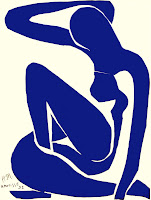Art movements simplified

Surely many, if not all, know all about what some of the Art movements we always hear of actually mean and represent, nevertheless some could benefit from the simplifications presented here. After all, we are constantly confronted and influenced by each and every one of these movements, it influences the furnitures we use or the architectural perplexities around us have all traces of one or the other, so we might as well know exactly what they represent and mean, here some of the more important movements.
Academic Art is the painting and sculpture produced under the influence of the Academies in Europe and especially France, where many artists received their formal training. It is characterized by its highly polished style, its use of mythological or historical subject matter, and its moralistic tone.
Expressionism is a style in which the intention is not to reproduce a subject accurately, but instead to portray it in such a way as to express the inner state of the artist.
Dada was a protest by a group of European artists against World War I, bourgeois society, and the conservativism of traditional thought. Its followers used absurdities and non sequiturs to create artworks and performances which defied any intellectual analysis. They also included random "found" objects in sculptures and installations.
Classicism was a British form of historical painting inspired by the art and architecture of Classical Greece and Rome.
Abstract Expressionism is a type of art in which the artist expresses himself purely through the use of form and color. It non-representational, or non-objective, art, which means that there are no actual objects represented.
Cubism was developed between about 1908 and 1912, the key concept underlying Cubism is that the essence of an object can only be captured by showing it from multiple points of view simultaneously.
Contemporary Realism is the straightforward realistic approach to representation which continues to be widely practiced in the post-abstract era.
Impressionism is a light, spontaneous manner of painting which began in France as a reaction against the restrictions and conventions of the dominant Academic art. The hallmark of the style is the attempt to capture the subjective impression of light in a scene.
Futurism was a modernist movement based in Italy celebrating the technological era. It was largely inspired by the development of Cubism The core preoccupations of Futurist thought and art were Machines and Motion.
Surrealism is a style in which fantastical visual imagery from the subconscious mind is used with no intention of making the work logically comprehensible.
Precisionism (or Cubist Realism) is a style of representation in which an object is rendered in a realistic manner, but with an emphasis on its geometric form.
Realism is an approach to art in which subjects are depicted in as straightforward a manner as possible, without idealizing them and without following rules of formal artistic theory.
Symbolism is a 19th-century movement in which art became infused with exaggerated sensitivity and a spooky mysticism. Anticipating Freud and Jung, the Symbolists mined mythology and dream imagery for a visual language of the soul.
The Renaissance was a period of great creative and intellectual activity, during which artists broke away from the restrictions of Byzantine art Throughout the 15th century, artists studied the natural world in order to perfect their understanding of such subjects as anatomy and perspective.
Byzantine art is the art of the Byzantine Empire, centered in Constantinople (now Istanbul).
Byzantine art was completely focused on the needs of the Orthodox church, in the painting of icons and the decoration of churches with frescoes and mosaics.
Underneath a clip of "Picaso" painting and clip of an interview with Salvador Dali..



Comments